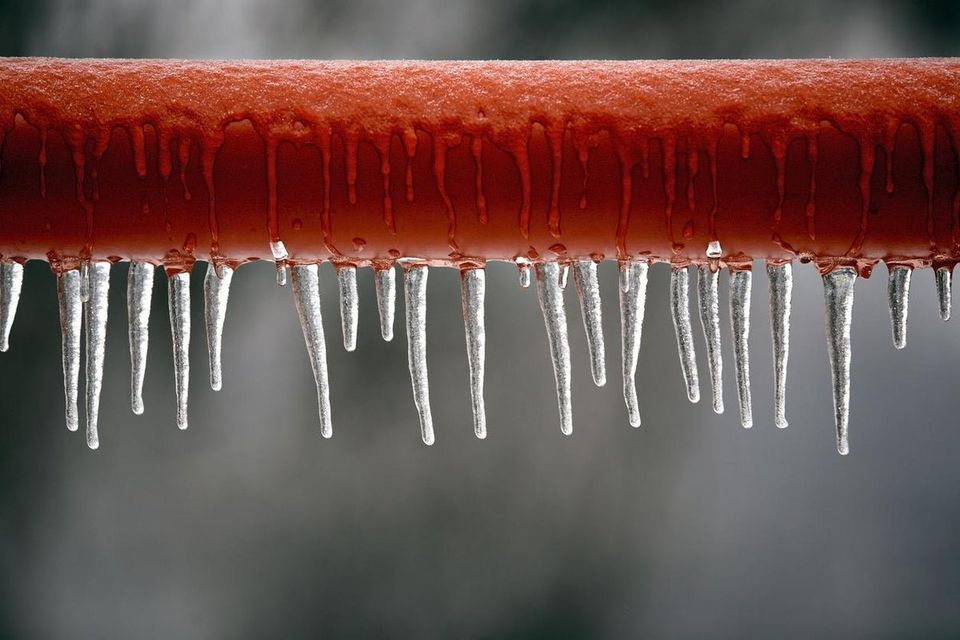Everyone may have their own individual theory in relation to Preventing and dealing with frozen pipes.

Winter can wreak havoc on your plumbing, specifically by freezing pipelines. Here's how to stop it from happening and what to do if it does.
Intro
As temperature levels drop, the risk of frozen pipes rises, potentially causing costly fixings and water damage. Recognizing how to avoid frozen pipes is important for homeowners in cool environments.
Avoidance Tips
Shielding prone pipelines
Cover pipes in insulation sleeves or make use of warmth tape to secure them from freezing temperature levels. Concentrate on pipelines in unheated or exterior areas of the home.
Home heating techniques
Maintain interior spaces adequately heated, particularly locations with pipes. Open up cabinet doors to enable cozy air to distribute around pipelines under sinks.
How to identify icy pipes
Search for reduced water circulation from faucets, unusual smells or sounds from pipes, and noticeable frost on revealed pipelines.
Long-Term Solutions
Structural changes
Consider rerouting pipes away from exterior walls or unheated areas. Include additional insulation to attics, cellars, and crawl spaces.
Updating insulation
Invest in premium insulation for pipes, attic rooms, and wall surfaces. Appropriate insulation helps maintain constant temperature levels and decreases the threat of icy pipes.
Protecting Outside Pipes
Yard pipes and outside faucets
Separate and drain pipes garden hose pipes before winter. Install frost-proof spigots or cover outdoor taps with shielded caps.
Comprehending Frozen Pipelines
What creates pipes to ice up?
Pipes ice up when subjected to temperatures below 32 ° F (0 ° C) for extended periods. As water inside the pipes freezes, it increases, putting pressure on the pipeline wall surfaces and potentially causing them to rupture.
Dangers and problems
Icy pipelines can lead to supply of water disturbances, home damages, and expensive repair services. Burst pipelines can flood homes and create extensive structural damages.
Indications of Frozen Piping
Recognizing frozen pipelines early can stop them from breaking.
What to Do If Your Pipes Freeze
Immediate activities to take
If you presume icy pipes, maintain faucets open to ease stress as the ice melts. Make use of a hairdryer or towels soaked in hot water to thaw pipes gradually.
Verdict
Protecting against icy pipes calls for aggressive steps and quick actions. By recognizing the reasons, indications, and safety nets, home owners can protect their plumbing during cold weather.
5 Ways to Prevent Frozen Pipes
Drain Outdoor Faucets and Disconnect Hoses
First, close the shut-off valve that controls the flow of water in the pipe to your outdoor faucet. Then, head outside to disconnect and drain your hose and open the outdoor faucet to allow the water to completely drain out of the line. Turn off the faucet when done. Finally, head back to the shut-off valve and drain the remaining water inside the pipe into a bucket or container. Additionally, if you have a home irrigation system, you should consider hiring an expert to clear the system of water each year.
Insulate Pipes
One of the best and most cost-effective methods for preventing frozen water pipes is to wrap your pipes with insulation. This is especially important for areas in your home that aren’t exposed to heat, such as an attic. We suggest using foam sleeves, which can typically be found at your local hardware store.
Keep Heat Running at 65
Your pipes are located inside your walls, and the temperature there is much colder than the rest of the house. To prevent your pipes from freezing, The Insurance Information Institute suggests that you keep your home heated to at least 65 degrees, even when traveling. You may want to invest in smart devices that can keep an eye on the temperature in your home while you’re away.
Leave Water Dripping
Moving water — even a small trickle — can prevent ice from forming inside your pipes. When freezing temps are imminent, start a drip of water from all faucets that serve exposed pipes. Leaving a few faucets running will also help relieve pressure inside the pipes and help prevent a rupture if the water inside freezes.
Open Cupboard Doors
Warm your kitchen and bathroom pipes by opening cupboards and vanities. You should also leave your interior doors ajar to help warm air circulate evenly throughout your home.
:strip_icc()/snow-outdoor-faucet-pipes-4af65d1e5e904fb1aa7bf74071fe5d89.jpg)
Hopefully you liked our section about How to Prevent Your Pipes From Freezing. Thanks so much for taking the time to read through our short article. If you enjoyed reading our blog posting kindly remember to share it. Thanks so much for your time spent reading it.
Schedule